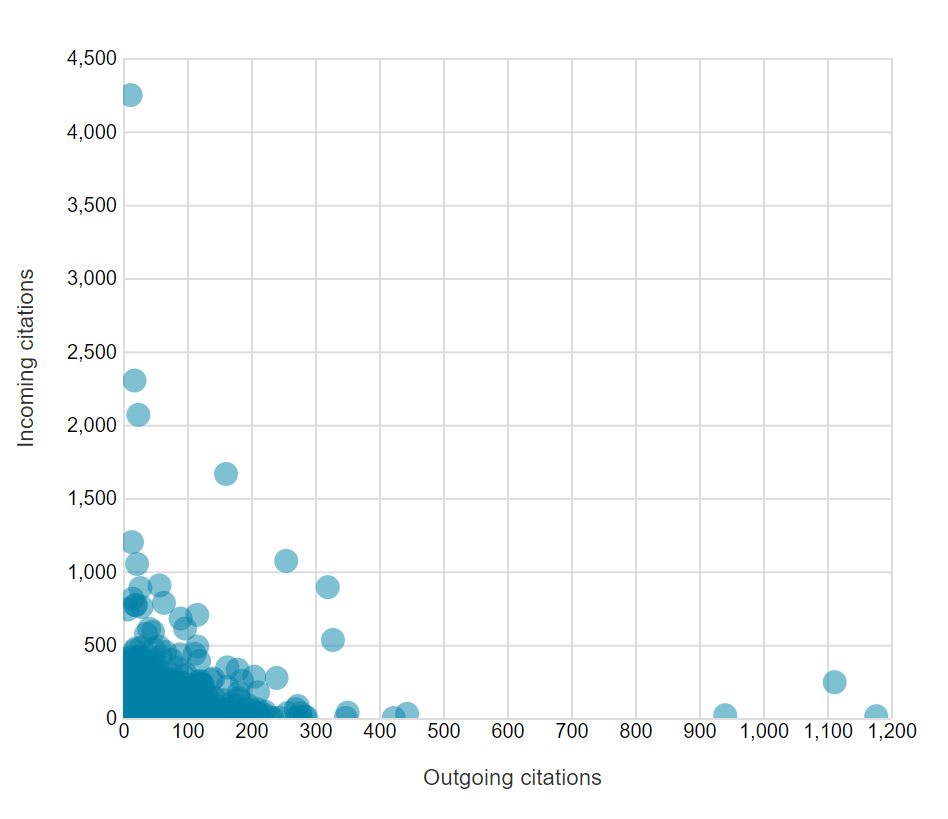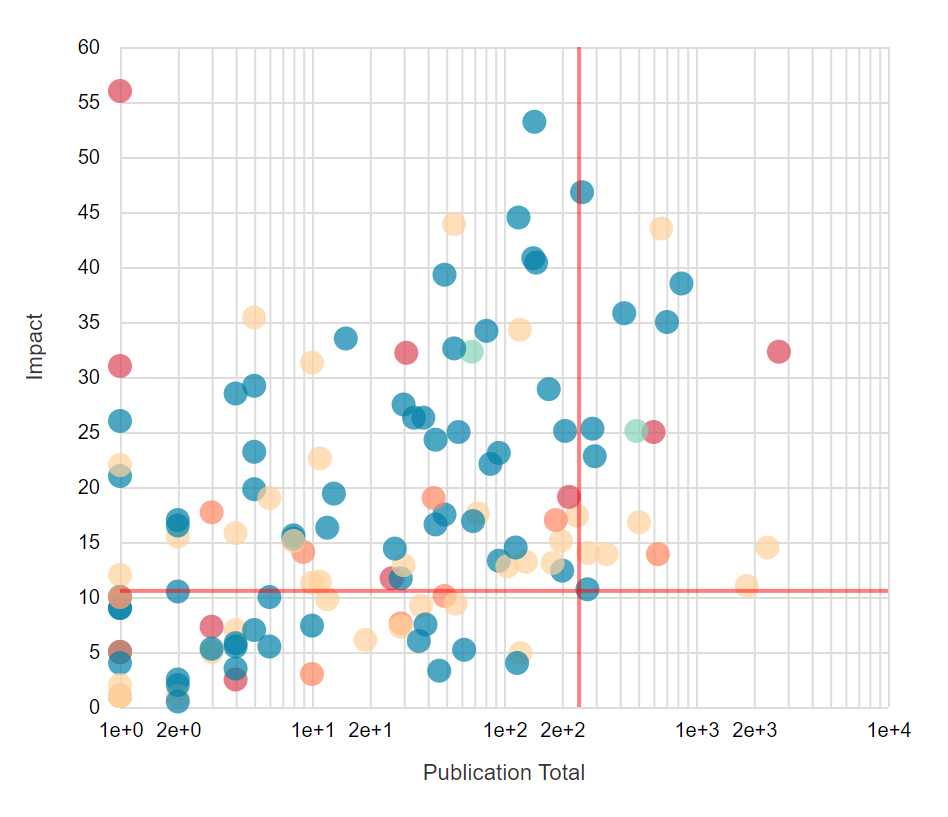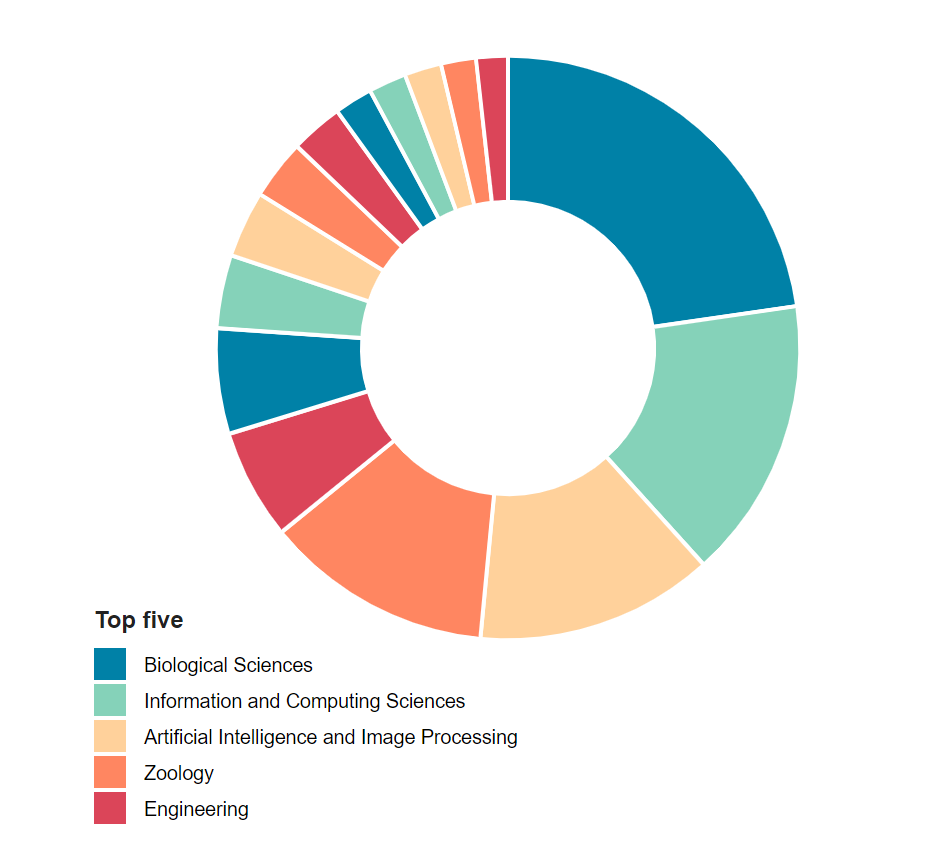Key publications
In the Dimensions database alone, 6.5 million new scientific publications were added in 2021, which amounts to nearly 18,000 publications per day. How can you possibly decide which of these publications you should read if you want to learn about a new field of research? An obvious approach is to tackle key publications in the form of review papers first to get an initial handle on the topic in question. Review papers typically contain many references as they need to cover a broad knowledge base. If a publication is cited, this means that it belongs to a knowledge base of this kind. The more often publications are cited, the greater their influence on a specific field. KATI features a reference-citation plot that plots these two metrics against each other. This makes it possible to quickly identify possible key publications and familiarize yourself efficiently with a topic without having to manually sift through volumes of publications for suitable literature.
Sound too good to be true? Contact us for a demonstration!
 Fraunhofer Institute for Technological Trend Analysis INT
Fraunhofer Institute for Technological Trend Analysis INT

